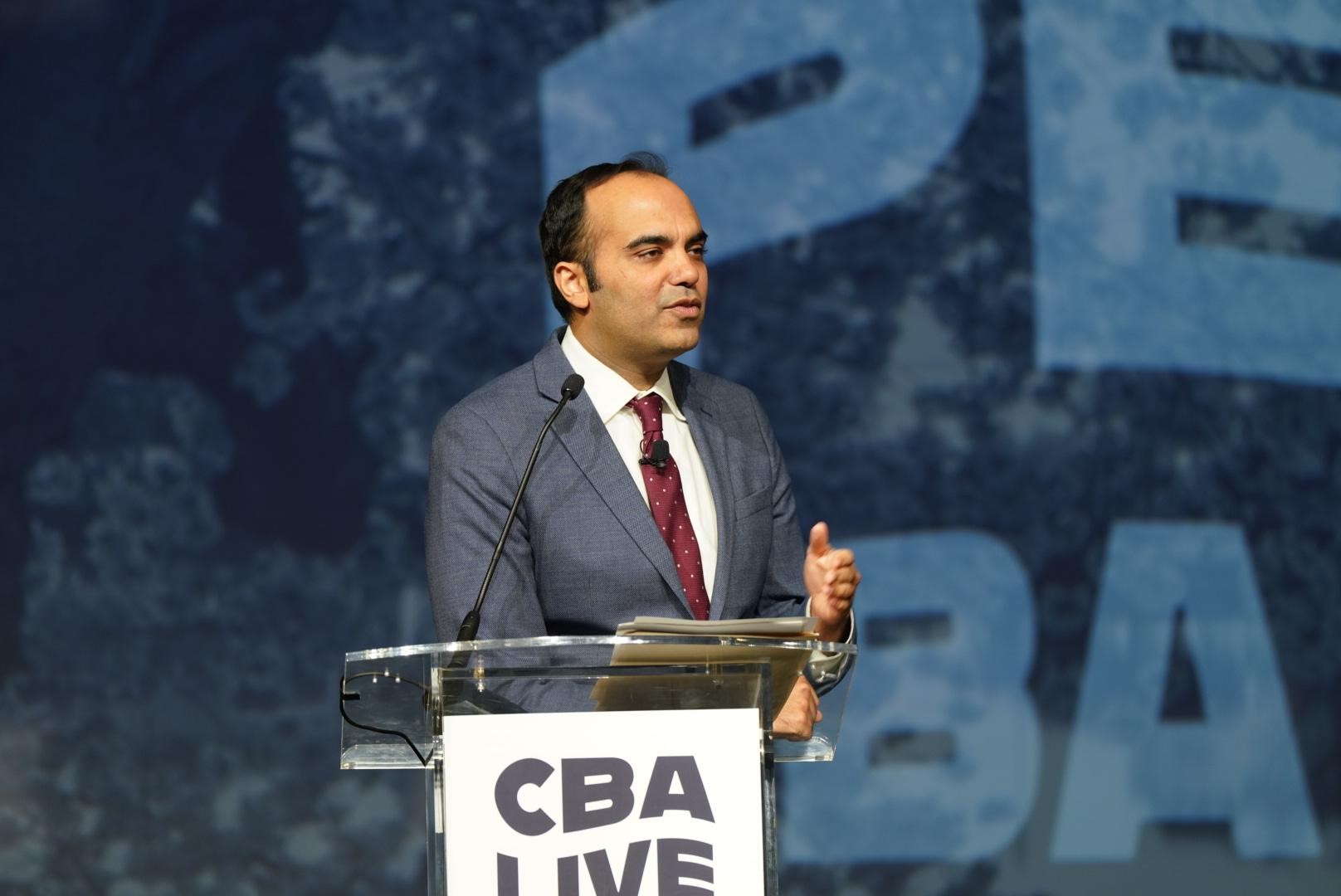Driving the Digital Revolution: How Bank Of America, Capital One, Comerica, and Truist Are Transforming Financial Technology To Better Serve Customers

Driven by consumer demand and a desire to provide the best banking experience available – whether at a branch or on an app – the banking industry is in the midst of a dramatic digital transformation. Last month, as part of a new blog series – Driving the Digital Revolution – CBA highlighted the latest efforts from CBA members Berkshire Bank, PNC Bank, US Bank, and JPMorgan Chase to enhance their digital offerings and bring banking into the future for American families and small businesses.
In this second edition, CBA is spotlighting the work of Bank of America, Capital One, Comerica and Truist, while also reaffirming the need for policymakers to modernize the rules of the road and ensure consumers receive the same level of protection – regardless of where they go to meet their financial needs.
Bank-Led Efforts, Driving the Digital Revolution
Bank of America
As the nation’s second largest financial institution, Bank of America has seen the digital engagement of its customers rapidly grow in recent years. Today, 85% of deposit transactions are being made through the Bank of America app, ATMs and other automated channels and more than 70% of Bank of America customers are actively using digital channels to meet their financial needs.
“We are delivering the best financial technology to help make our clients’ financial lives better. To elevate each client’s digital journey across their entire relationship with us, we focus on their unique needs and aspirations so that we can deliver individualized digital experiences.” – David Tyrie, head of digital at Bank of America.
Two consumer products driving this digital engagement are Erica and Life Plan, both available through Bank of America’s Mobile Banking app and Online Banking platform.
- Erica leverages the latest technologies in advanced analytics and cognitive messaging to serve as a trusted financial assistant, empowering customers with greater access and information to manage cash flow, balances, transaction history and upcoming bills.
- Life Plan helps customers achieve their financial goals – whether saving to buy a house, pay for college, or reduce unwanted debt. The digital feature provides daily progress updates, a user-friendly dashboard, and personalized insights from a trusted financial specialist.
Capital One
Traditionally recognized as a digital-first bank, Capital One is striving to create a bank of the future – helping people lead simpler, more fulfilling, and more rewarding lives. From AI and machine learning to the public cloud , every technology the bank deploys is designed to better serve customers. This strategic focus was pushed into overdrive in 2010, when the bank launched an ambitious plan to turn itself into a leader in code-driven innovation and invest in talent to develop its own digital offerings, rather than outsource to other firms. Today, the bank employs a technology staff of almost 11,000 people, 85% of whom are software engineers.
Upon announcing plans to hire an additional 3,000 technologists last summer, Capital One’s Chief Information Officer Rob Alexander said:
“Early in our digital transformation we made a commitment to invest like the very best technology companies do. That meant developing our own software engineering talent and reimagining traditional IT operating models. I think folks are compelled by [our] transformation. They learn how to do it at Capital One and that makes them very attractive [to others].”
Capital One is applying machine learning across every segment of its business, from fraud prevention to cybersecurity, credit monitoring and more. Consumers have benefited directly from the introduction of Eno, the bank’s intelligent assistant, aimed at providing customers gain greater control of their accounts and protect their money. Eno also helps customers to monitor for fraud in real-time, create virtual account numbers and pay bills via text message.
Comerica Bank
In 2016, Dallas-based Comerica Bank began a digital transformation journey to ensure the 170-year-old financial institution was poised to become a leading provider of choice for its customers. Through its comprehensive technology strategy – TechVision 2020 – the bank established a roadmap to elevate the digital expectations of its customers through key initiatives such as improving cybersecurity, upskilling talent, modernizing existing platforms and creating enterprise-wide agile capabilities to usher in a new era of innovation.
Commenting on how this ongoing commitment to enhance the banking experience for customers is necessary not only to satisfy customers but to meaningfully compete in an increasingly digital world, CBA’s Digital Channels Committee Chair and Senior Vice President of eBanking Retail Products at Comerica, Kristy Brandon, said:
“It’s a core part of our doctrine, and a promise to our customers. Customers walk in our doors, log into web banking, or face ID into our mobile app — they don’t differentiate between those experiences.Customers are not really comparing us to other banks, but to other experiences they have.”
As part of its efforts to enable a richer customer experience, the TechVision 2020 plan yielded the introduction of voice AI and voice authentication for customer support calls. This initiative, which began in 2019, has already improved customer support efficiency by over 50% and is centered squarely on improving the digital experience at Comerica.
Truist
The recent merger of BB&T and SunTrust to create Truist, now the nation’s seventh largest retail bank, serves as a real-world example of the importance technology continues to play in an increasingly competitive banking landscape. Improving the customer experience with technology was a cornerstone of the deal that created Truist and since its successful integration, Truist has worked to enable innovation, develop digital new products, and incorporate the best technology practices of its legacy banks to provide the best banking experience available in the market.
As part of this effort, the bank has incorporated a tech-centered business plan, called T3, which Truist President & CEO Bill Rogers said was developed as a direct response to a massive paradigm shift of its customers, 40% of whom now open accounts digitally:
“We want what we want right here, right now, right in the palms of our hands. To thrive in this new world, we’ve adopted a new value proposition—touch plus technology equals trust (T3). It seamlessly integrates the personal touch that we’ve long been known for with innovative technology, yielding our most valuable asset—the trust of our clients.”
Truist is set to unveil its new Innovation and Technology Center within Truist Center, its headquarters in Charlotte, NC in the coming weeks. The $31 million flexible workspace is nearly the size of two football fields and will help strengthen research, design, development, and testing of new digital products to create a better and more secure financial interactions for its customers.
The Need For Level Playing Field Has Never Been Greater
With greater competition in banking serving as a key driver behind these bank-led technological investments, consumers stand to benefit from the ability to choose a bank with the innovative product suite which best serves their needs. At the same time, a growing percentage of consumers are utilizing the services of fintech firms that are competing for the same customers as traditional banks, but do not abide by the stringent federal oversight requirements as banks do, depriving families of the protections they deserve.
Recognizing the importance of instituting a level regulatory playing field to maintain the safety and soundness of our financial system, JPMorgan Chairman & CEO Jamie Dimon said last year:
“America’s financial system is the best the world has ever seen, from our regulatory system and rule of law to exchanges, venture capital and private capital, banks and shadow banks. As our system changes, our government and regulators need to understand that maintaining the vibrancy, safety and soundness of this system is critical – and this includes maintaining a fair and balanced playing field.”
CBA has long served as a leading voice in Washington on the harmful implications of this regulatory disparity for hardworking families and has advocated for policymakers to modernize the rules of the road to ensure safety and stability in the rapidly evolving banking industry. To learn more about our advocacy efforts, click HERE and HERE.
Click HERE to read more from CBA’s Driving the Digital Revolution Series
CBA’s Digital Channels Committee
As one of fourteen standing committees within the enterprise, CBA’s Digital Channels Committee focuses on digital banking and related issues to enhance the customer banking experience and increase user engagement. The Committee provides a forum to discuss challenges and opportunities for digital banking, as well as insights to assist our members as they adapt to the rapidly growing multichannel bank environment, including digital’s role in physical channels.
The Committee’s goals are to:
- Provide thought leadership and highlight best practices in digital channels for banks;
- Share insight and guidance on the digital payments ecosystem;
- Provide a vital forum to discuss banks’ digital evolution and look ahead to additional growth and transformation; and
- Generate original research and plan compelling CBA LIVE programming on digital banking topics – expanding participation and engagement.
To learn more about CBA’s Digital Channels Committee, click HERE.
Join members of the Digital Channels Committee and other top industry leaders at CBA LIVE 2022, March 7-9 in San Antonio, Texas, to hear their perspectives on this ongoing transformation in an increasingly competitive banking marketplace. Register now to secure your spot at retail banking's premier annual event!



